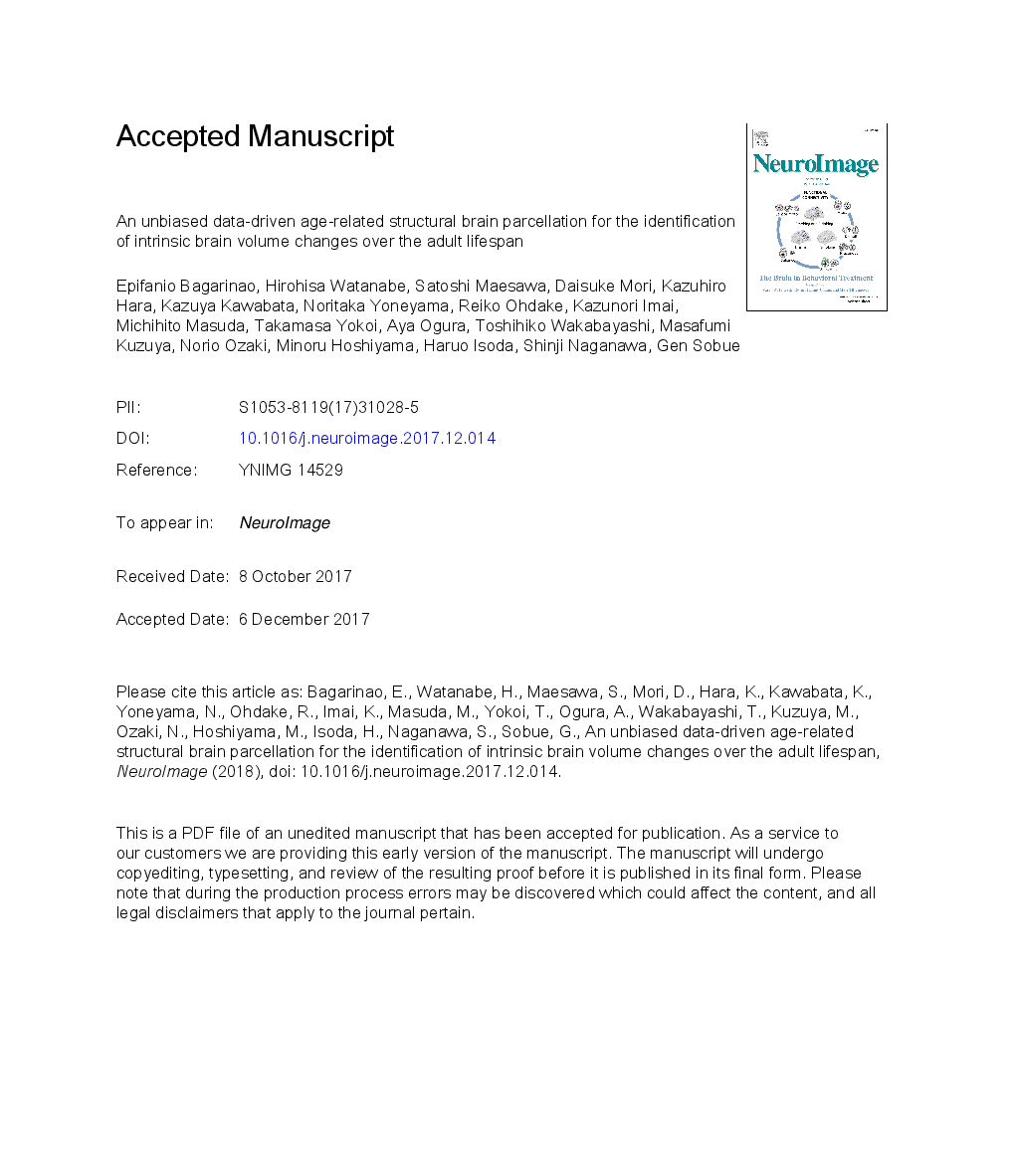ترجمه فارسی عنوان مقاله
اختلال مغزی استخوانی ساختاری مرتبط با سن مبتنی بر داده ها برای شناسایی حجم مغز ذاتی در طول عمر بالغین
عنوان انگلیسی
An unbiased data-driven age-related structural brain parcellation for the identification of intrinsic brain volume changes over the adult lifespan
| کد مقاله | سال انتشار | تعداد صفحات مقاله انگلیسی |
|---|---|---|
| 130884 | 2018 | 41 صفحه PDF |
منبع

Publisher : Elsevier - Science Direct (الزویر - ساینس دایرکت)
Journal : NeuroImage, Volume 169, 1 April 2018, Pages 134-144
ترجمه کلمات کلیدی
پیری سالم تقسیم مغزی، پیش بینی مغز، تجزیه و تحلیل جزء مستقل، تجزیه و تحلیل تنوع ساختاری،
کلمات کلیدی انگلیسی
Healthy aging; Brain parcellation; Brain-age prediction; Independent component analysis; Structural co-variation analysis;

